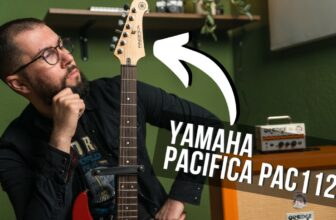12 Different Types of Guitars (With Pictures)
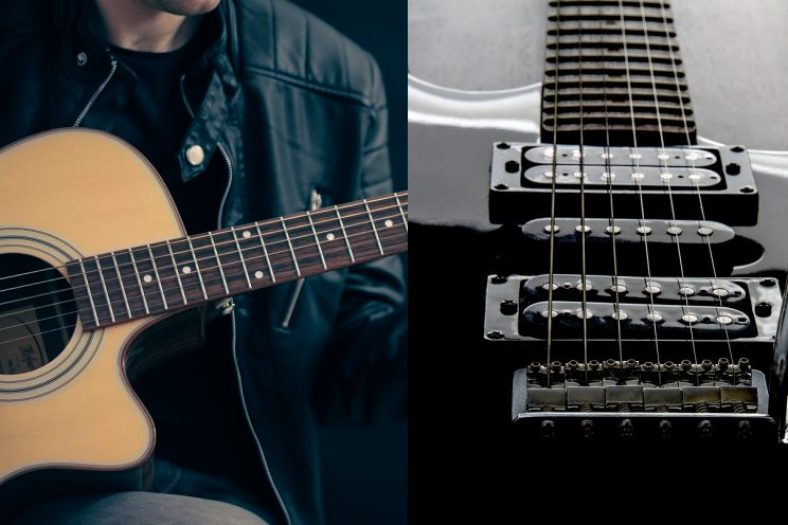
There are a lot more different guitar types than the usual acoustic and electric models that come to most people’s minds. The guitar has evolved in such a way that many different variations have been made.
Some of these types of guitars are very interesting and they vary based on their design, sound produced, and playing techniques. There are certainly a number of different types of guitars out there.
Contents
1. Acoustic Guitar

This is the most common type, the one we picture in our head when someone mentions the word guitar. It is present in almost every genre of popular music and even though there are some variations regarding shape, all of them are characterized by steel strings and the same group of tonewoods that are used.
All acoustic guitars work in the same way. Once one of the strings is plucked, the string vibration goes through the bridge to the top, side, and back wood of the body, and then resonates through the air inside the body, making the sound.
Acoustic guitars are usually made from tonewoods like spruce, mahogany, ebony, etc. Of course, each material uniquely impacts the sound but, generally, acoustic guitars are characterized by bright and precise tone, especially in higher frequencies.
There are different types of acoustic guitars, regarding body shape. Some of the most common are dreadnought, double-O, grand auditorium, etc.
2. Classical Guitar
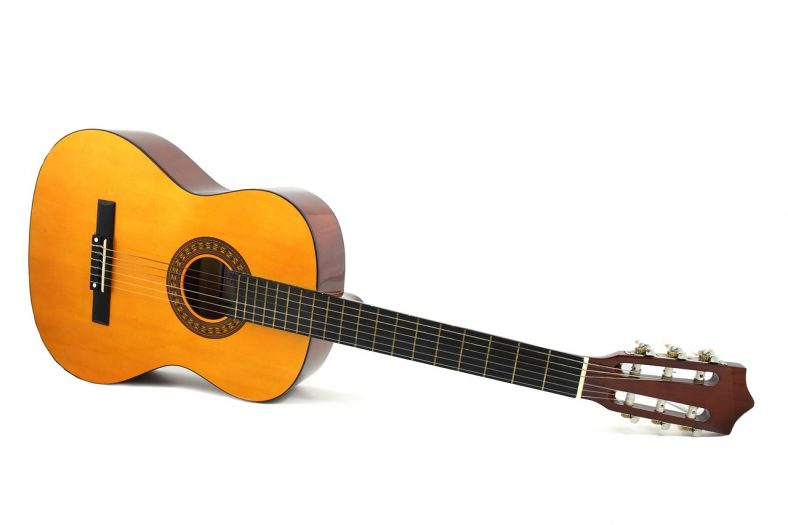
Throughout history, numerous string instruments looked similar, but a classical guitar is the first one that came with a shape that is typical for today’s guitars. It dates from the 19th century and features a few important differences compared to acoustic guitars.
The first thing you’ll notice is the string material. While acoustic guitars are steel string guitars, a modern classical guitar features nylon strings (natural materials were used in the past). As a result, the tone is notably different. While acoustic guitars sound bright and sharp, classical guitars sound soft and mellow.
Another big difference is in the fretboard design. Classical guitars feature wider fretboards, which work better for techniques like fingerpicking. On the other hand, an acoustic guitar is more about strumming and playing with a pick.
When it comes to tonewoods, tops are usually made from mahogany, spruce, cedar, maple, etc. The back and sides are usually made from rosewood, mahogany, maple, Hawaiian koa, etc.
3. Electric Guitar
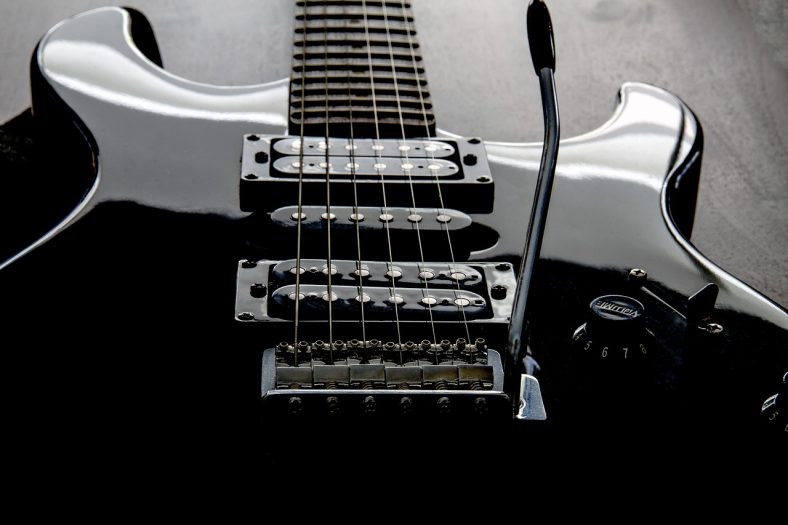
The first electric guitars appeared in the first half of the 20th century and compared to acoustic and classical guitars, they can’t produce a sound that’s loud enough to be played without an amplifier. Originally, electric guitars were designed for jazz players and the reason is quite obvious. In a big band full of brass instruments, it’s impossible to be loud enough with an acoustic guitar, especially when you play a single-note solo. So, amplification was the solution.
The way electric guitar works is different compared to acoustic guitars. The body is made from a solid piece of wood, so there is no resonator box. Instead, string vibrations are picked up by pickups, which turn the sound into an electrical signal, which is reproduced as sound by loudspeakers.
Electric guitars are also characterized by thin and comfortable necks, which allow unparalleled playability, especially for single-note soloing. As you may presume, there are numerous types of electric guitars out there.
Still, the most typical thing about an electric guitar is the tone, which can be altered in so many ways. That can be done by preamps, pedals, digital processors, and many other ways. The most common electric guitar tone is distortion, typical for blues, rock, metal, and similar genres. Although, you can even hear it in pop nowadays.
4. Electro-Acoustic Guitar
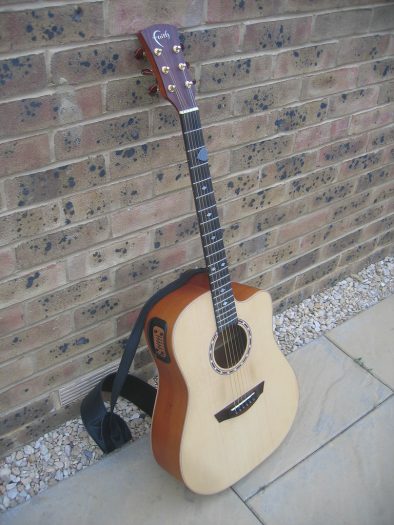
Commonly known as acoustic-electric guitars, this guitar type is somewhere halfway between acoustic and electric guitars. The overall design is pretty much the same as on acoustic guitars. However, they also feature pickups, which allows them to be much louder.
The general idea of an electro-acoustic guitar is to sound like an acoustic guitar but louder. Without an amp, these guitars sound the same as acoustic guitars. On the other hand, the amplified sound can be altered in many ways, with effects like reverb, delay, chorus, etc. However, distortion doesn’t sound very good, because of too much feedback that comes from its highly-resonating body.
5. Twelve-String Guitar
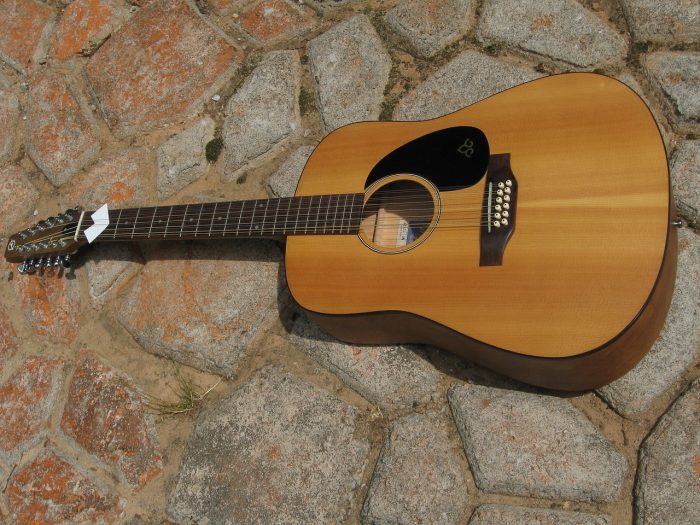
A twelve-string guitar is a guitar that features twelve strings instead of six. The tuning is the same as in a 6-string guitar, with two strings for each note. That provides a far more powerful tone.
Also, lower strings are usually tuned in octaves. So, there is a combination of thicker and thinner strings for each note. The thickness difference causes different vibrations, which produces a natural chorus effect, which is probably the most authentic thing about a twelve-string guitar.
6. Bass Guitar
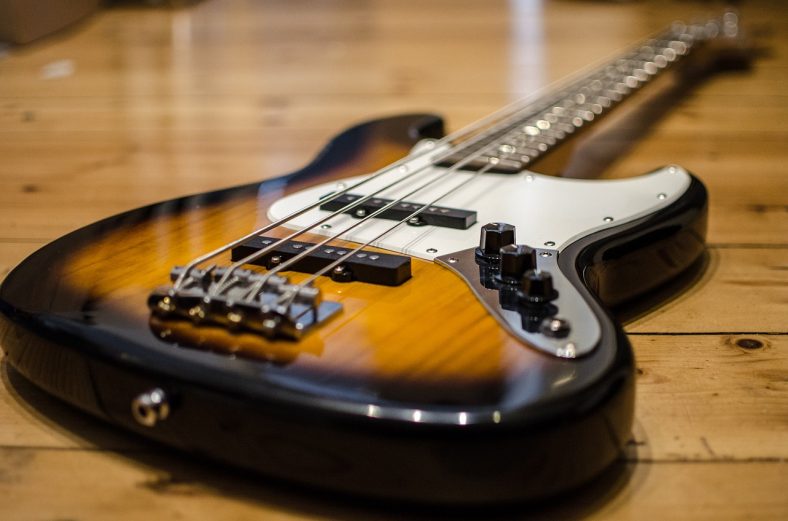
A bass guitar can be either electric or acoustic, though the electric bass guitar is more common. Compared to other guitar types, it usually features four stings, though we can find five or six string bass models. This guitar is notably bigger and features a longer scale, which allows the use of thicker strings that can be tuned in a much lower, bass tonal range.
7. Resonator Guitar
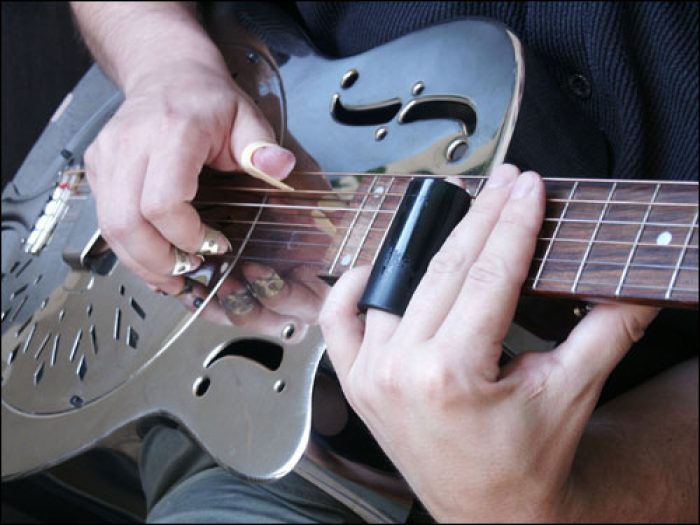
Resonator guitars were originally designed to be louder than acoustic guitars – to help guitar players in large orchestras. Later, this problem was solved with electric guitars and amplification, so they were almost forgotten. However, the distinctive sound of resonator guitars remained popular (especially with a slide) in certain music genres, particularly bluegrass, folk, etc.
The main reason for such a distinctive sound is a spun-metal cone, which conducts string vibration instead of wood tops. For that reason, the tone is louder and very distinctive. Resonator guitars are usually played in lap steel guitar style.
8. Archtop Guitar
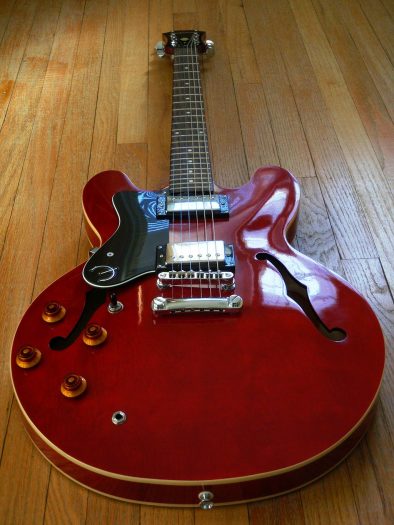
The first electric guitars featured an archtop design but were later replaced with semi-hollow and solid body guitars, which are cheaper and easier to make. One of the main design characteristics is that the guitar top isn’t flat but rather arched. Instead of a typical round hole, they feature violin-like f-holes and hollow bodies.
Today, archtop guitars are very expensive and predominantly used by jazz guitarists.
9. Semi-hollow electric guitars
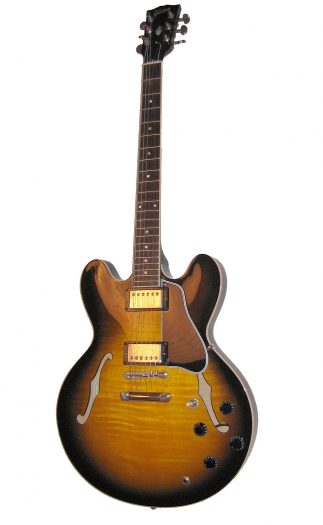
Also predominantly used by jazz players, semi-hollow guitars are pretty similar to archtop guitars. The main difference is that the center part of the body isn’t hollow, but rather features a solid block of wood. As a result, it offers a better sustain, but less natural tone.
10. Multi-Neck Guitar
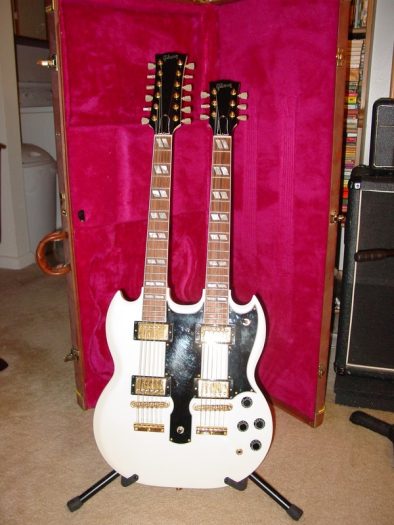
As the name says, these guitars come with two or more neck fretboards. They can be either acoustic or electric and double-necked guitar models are the most common. They may feature various configurations, but the most popular combination is the one that includes 6- and 12-string necks.
Other models can feature combinations of fret and fretless fingerboards, 6-string and bass guitars, etc. Multi-neck bass guitars are also common.
11. Pocket Guitar

People travel more than ever and many of them play guitar as well. When you’re on the move, you need something portable. 3/4-sized guitars are very popular, but there are even smaller pocket guitars. They usually feature just a part of a regular neck, with no more than several frets, without the body. They usually don’t produce any sound or they are extremely quiet. Their main purpose is exercise.
12. Harp Guitar
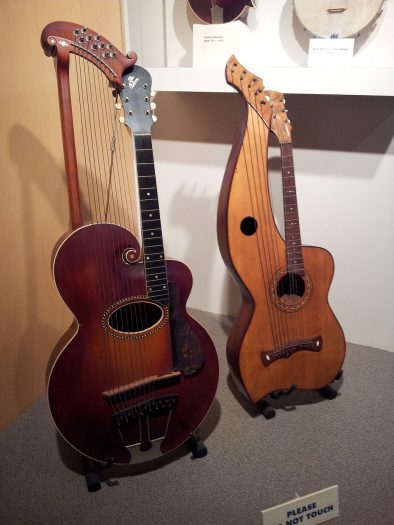
A harp guitar has everything a regular guitar has, but also comes with extra features. These extra features are several unstopped strings, which can be played just as open strings, in the same way you play the harp. That’s where the name comes from. Compared to standard guitars, they offer additional flexibility but also require more skill and better technique to play, so beginners will have a challenge.
Summary
These would be the most common guitar types you can find on the market today. Keep in mind that the actual number of variations of this beautiful instrument is much bigger. Many of them are custom-made and can’t be found in music stores. I hope this guide shed some light on the modern musician.
Electro-Acoustic Guitar Image by: “2003 Faith Saturn electro-acoustic guitar” by tawalker is licensed under CC BY 2.0
Resonator Guitar Image by: Lubos Bena, CC BY-SA 3.0, via Wikimedia Commons
Archtop Guitar Image by: Gary J. Wood from Toronto, ON, Canada, CC BY-SA 2.0, via Wikimedia Commons
Semi-hollow Electric Guitars Image by: Federico.Gallerani, CC BY-SA 3.0, via Wikimedia Commons
Multi-Neck Guitar Image by: T. Wesley, Public domain, via Wikimedia Commons
Pocket Guitar Image by: “Phil Keaggy and the Pocket Guitar” by nlnnet is licensed under CC BY-SA 2.0
Harp Guitar Image by: doryfour, CC BY-SA 2.0, via Wikimedia Commons




